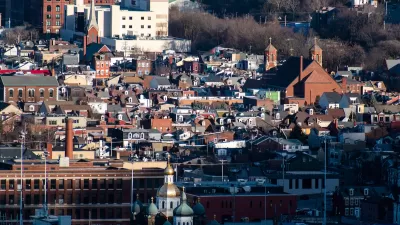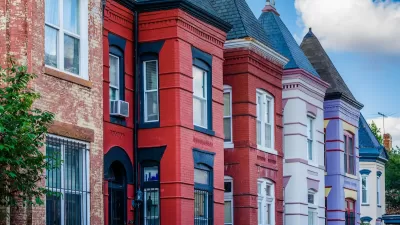Smaller lot sizes for single-family homes can make construction more affordable and homeownership available to more households.

The Austin City Council voted to reduce the city’s minimum lot size for single-family homes as part of its effort to make housing construction more affordable and encourage gentle density increases. As Joshua Fechter notes in The Texas Tribune, the new lot size rule reduces minimum lot size from 5,750 square feet to 1,800 square feet. “The council also voted to allow apartment buildings to be built closer to single-family homes and denser development along a planned light-rail line,” acknowledging that successful transit and housing density go hand in hand.
As Austin housing prices skyrocketed during the pandemic, city officials found themselves able to push through more housing reforms than were possible before. A reform package dubbed “Home Options for Mobility and Equity” (HOME) makes significant zoning changes to encourage housing production, but “Resistance to the reforms runs deep among some neighborhood groups, anti-gentrification activists and the city’s old guard of environmentalists, all of whom have long opposed efforts to boost Austin’s overall housing density.”
FULL STORY: Austin will now allow homes on smaller lots in bid to fight housing affordability crisis

Maui's Vacation Rental Debate Turns Ugly
Verbal attacks, misinformation campaigns and fistfights plague a high-stakes debate to convert thousands of vacation rentals into long-term housing.

Planetizen Federal Action Tracker
A weekly monitor of how Trump’s orders and actions are impacting planners and planning in America.

San Francisco Suspends Traffic Calming Amidst Record Deaths
Citing “a challenging fiscal landscape,” the city will cease the program on the heels of 42 traffic deaths, including 24 pedestrians.

Defunct Pittsburgh Power Plant to Become Residential Tower
A decommissioned steam heat plant will be redeveloped into almost 100 affordable housing units.

Trump Prompts Restructuring of Transportation Research Board in “Unprecedented Overreach”
The TRB has eliminated more than half of its committees including those focused on climate, equity, and cities.

Amtrak Rolls Out New Orleans to Alabama “Mardi Gras” Train
The new service will operate morning and evening departures between Mobile and New Orleans.
Urban Design for Planners 1: Software Tools
This six-course series explores essential urban design concepts using open source software and equips planners with the tools they need to participate fully in the urban design process.
Planning for Universal Design
Learn the tools for implementing Universal Design in planning regulations.
Heyer Gruel & Associates PA
JM Goldson LLC
Custer County Colorado
City of Camden Redevelopment Agency
City of Astoria
Transportation Research & Education Center (TREC) at Portland State University
Jefferson Parish Government
Camden Redevelopment Agency
City of Claremont





























